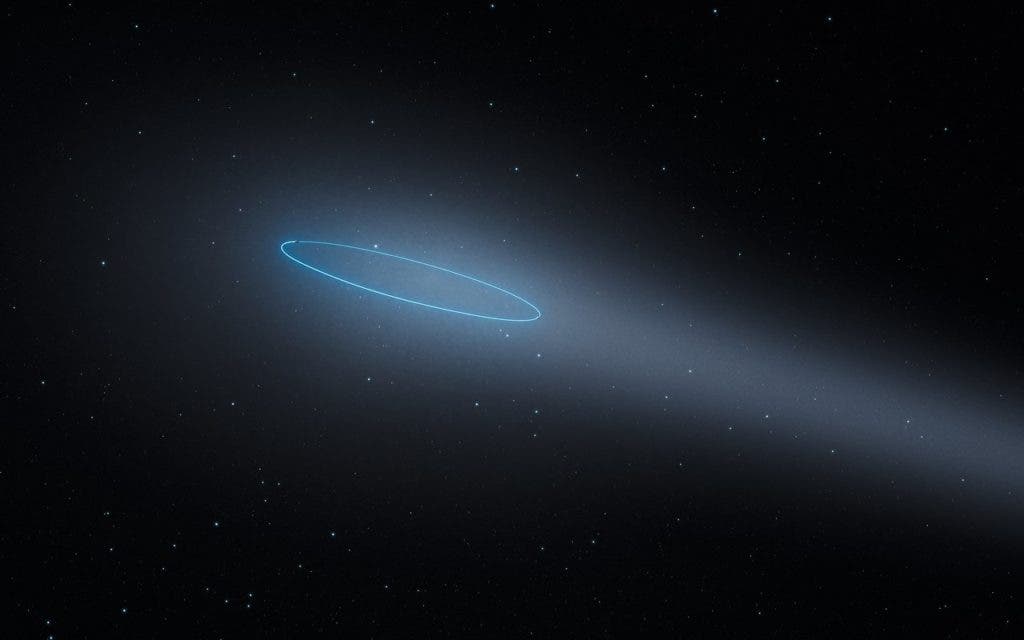Is it an asteroid? Is it a comet? It’s both and more. A group of astronomers recently published a paper describing one of the more unusual objects hidden in the asteroid belt. Known as 288P, this asteroid couple orbits each other while also exhibiting comet-like features.

Image credits ESA / Hubble Images and Videos.
Back in September 2016, 288P was making its closest recorded approach to the Sun. Scientists naturally giggled in anticipation, since 288P looked like a comet and we don’t get to see belt-borne comets in this corner of space very often. Understanding how they form and behave could help teach us about the birth of the Solar System at large. So drawing on the NASA/ESA Hubble Space Telescope, the group of astronomers, led by Max Planck Institute for Solar System Research scientist Jessica Agarwal, seized this opportunity to take a detailed look at the body.
What they found is so far unique: 288P is not a single body, but two asteroids orbiting each other and exhibiting comet-like features, including a bright coma and a long tail. It is the first time we’ve even seen a binary asteroid body that’s also a comet.
Asteroids cometh
The snaps Hubble took of 288P showed that it’s actually a duo of asteroids, of almost the same size and mass, orbiting at about 100 kilometers (62.1 miles) from one another. This observation was crucial in itself, as by recording their orbits the team could calculate their masses. However, the data Hubble recorded also helped reveal ongoing activity in the binary system, the team reports, offering a glimpse of the body’s past.
“We detected strong indications of the sublimation of water ice due to the increased solar heating — similar to how the tail of a comet is created,” Agarwal explains.
“Surface ice cannot survive in the asteroid belt for the age of the Solar System but can be protected for billions of years by a refractory dust mantle, only a few metres thick.”
Starting from this, the team concluded that 288P has been in its current binary form for about 5,000 years now. The most probable cause of formation is “a breakup due to fast rotation,” Agarwal says, with the resulting fragments possibly being pushed further apart by “sublimation torques.” Binary asteroid systems are relatively common, but 288P stands out through the wide berth between the two component bodies, their near-equal size and mass, high eccentricity, and comet-like features, making 288P unique among known asteroid binaries in the Solar System.
One of the questions scientists are trying to answer when looking at main-belt bodies (comets as well as asteroids) is whether or not they shuttled water from space to young Earth, helping create the oceans of today. We don’t get to see a lot of them up close, so 288P stands out as an extremely important system for future studies. Its uniqueness also poses some problems, however. It’s so starkly different from anything else we’ve seen that we don’t have anything to meaningfully compare it with — so we don’t know if its properties are a fluke or quite common.
“We need more theoretical and observational work, as well as more objects similar to 288P, to find an answer to this question,” concludes Agarwal.
Since snapping 288P involved quite a bit of luck, it may be quite a while before we spot these objects, though.
The paper “A binary main belt comet” has been published on ESA’s hubblesite, here.


